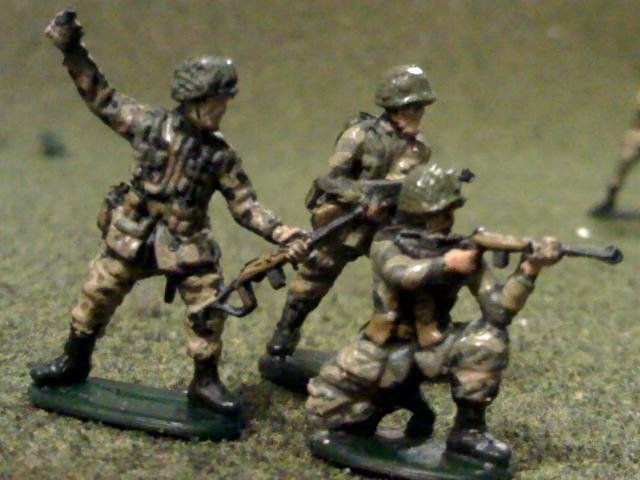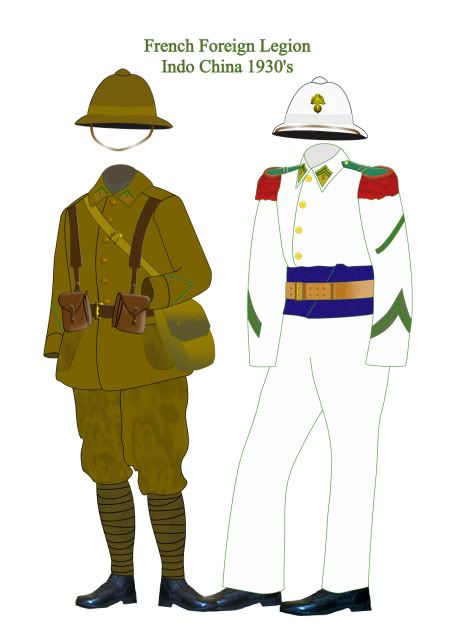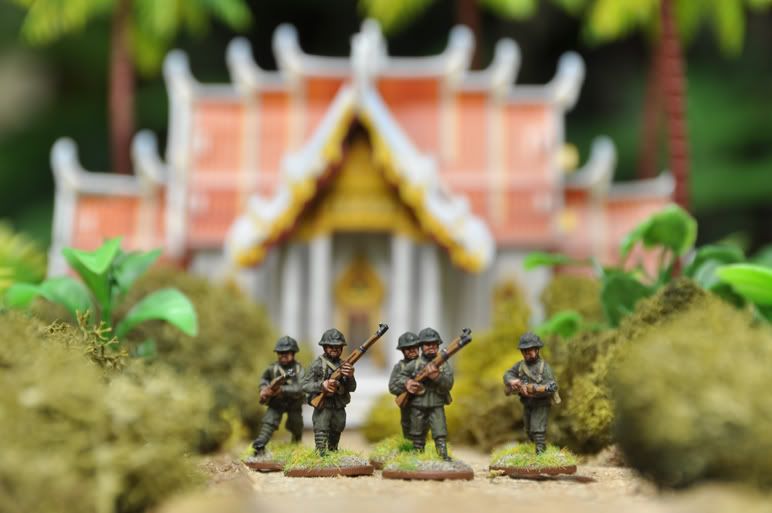 During the Second World War, while France was defeated and partially
During the Second World War, while France was defeated and partially  occupied by Germany in 1940, both Japan and her ally Thailand initiated
occupied by Germany in 1940, both Japan and her ally Thailand initiated  border conflicts with the French colonial forces in Vietnam and
border conflicts with the French colonial forces in Vietnam and  IndochinaFranco-Japanese Border War (Sept. 22, 1940-Sept. 24, 1940)--Soon
IndochinaFranco-Japanese Border War (Sept. 22, 1940-Sept. 24, 1940)--Soon after France fell to Germany, Japan sought passage through French
after France fell to Germany, Japan sought passage through French  Indochina in order to attack Nationalist Chinese forces near the border. French
Indochina in order to attack Nationalist Chinese forces near the border. French authorities in Hanoi refused, prompting Japan to launch a ground attack on
authorities in Hanoi refused, prompting Japan to launch a ground attack on  the French border forts at Long-Son and Dong-Dang.
the French border forts at Long-Son and Dong-Dang.  Two days later, Japanese aircraft bombed the port city of Haiphong and the Japanese navy landed troops at the port. During the two days of fighting, nearly
Two days later, Japanese aircraft bombed the port city of Haiphong and the Japanese navy landed troops at the port. During the two days of fighting, nearly 800 French troops were killed. Thailand, then an ally of Japan, initiated an invasion of French Indochina after early border skirmishes from November 1940. After early successes, the Thai forces
800 French troops were killed. Thailand, then an ally of Japan, initiated an invasion of French Indochina after early border skirmishes from November 1940. After early successes, the Thai forces were forced back by French reinforcements. At sea, the French navy, in the form of one cruiser, wiped out nearly one third of the Thai navy off the island of Kho Chang on Jan. 17. Japan arranged a cease-fire on Jan. 28. Per a written agreement signed on March 11, France gave portions of Laos and Cambodia to Thailand.
were forced back by French reinforcements. At sea, the French navy, in the form of one cruiser, wiped out nearly one third of the Thai navy off the island of Kho Chang on Jan. 17. Japan arranged a cease-fire on Jan. 28. Per a written agreement signed on March 11, France gave portions of Laos and Cambodia to Thailand. on 22 June 1940, France signed an armistice with Germany, Japan's Axis ally. This established the neutral but pro-AxisVichy France government in the unoccupied part of France. Vichy France also controlled most French overseas possessions, including Indochina.
on 22 June 1940, France signed an armistice with Germany, Japan's Axis ally. This established the neutral but pro-AxisVichy France government in the unoccupied part of France. Vichy France also controlled most French overseas possessions, including Indochina.
The IJA captured Longzhou, closing one route, but the rail line to Yunnan was still open. Japanese aerial bombing did not close it.

Japan pressured the Vichy government to close the railway, but the French did not agree.
On 5 September the South China Front Army of the IJA organized the amphibious Indochina Expeditionary Army to move into Indochina. Led by Major-General Takuma Nishimura, it was supported by a flotilla of ships, and planes from aircraft carriers and air bases on Hainan Island.
Faced with this invasion threat, Vichy France yielded. On 22 September, Japan and Vichy Indochina signed an accord which granted Japan the rights to station troops in Indochina, and to move troops and supplies through Indochina. The accord allowed up to 6,000 Japanese troops to be stationed in Indochina, with no more than 25,000 troops stationed or in transit at any given time. In addition, all Japanese land, air, and naval forces were barred from Indochinese territory except as authorized in the accord.Within a few hours, columns from the IJA 5th Division under Lieutenant-General Akihito Nakamura moved over the border at three places and closed in on the railhead at Lang Son, near Longzhou. This contravened the new agreement. In the Battle of Lang Son, a brigade of French Indochinese colonial troops and Foreign Legionaires opposed the IJA until 25 September. The Japanese victory opened the way to Hanoi. Still the Vichy French had defenders in the north and south, and fresh battalions in position on the route from Lang Son to Hanoi.
On 23 September, Vichy France protested the breach of the agreements by the IJA to the Japanese government.
On the morning of 24 September, Japanese aircraft from aircraft carriers in the Gulf of Tonkin attacked French positions on the coast. A Vichy envoy came to negotiate; in the meantime, shore defenses remained under orders to open fire on any attempted landing.
On 26 September, Japanese forces came ashore at Dong Tac, south of Haiphong, and moved on the port. A second landing put tanks ashore, and Japanese planes bombed Haiphong, causing some casualties. By early afternoon the Japanese force of some 4,500 troops and a dozen tanks was outside Haiphong.

By the evening of 26 September fighting had died down. Japan took possession of Gia Lam Airbase outside Hanoi, the rail marshalling yard on the Yunnan border at Lao Cai, and Phu Lang Thuong on the railway from Hanoi to Lang Son, and stationed 900 troops in the port of Haiphong and 600 more in Hanoi. Japanese forces remained in Indochina until the end of World War II.

No comments:
Post a Comment